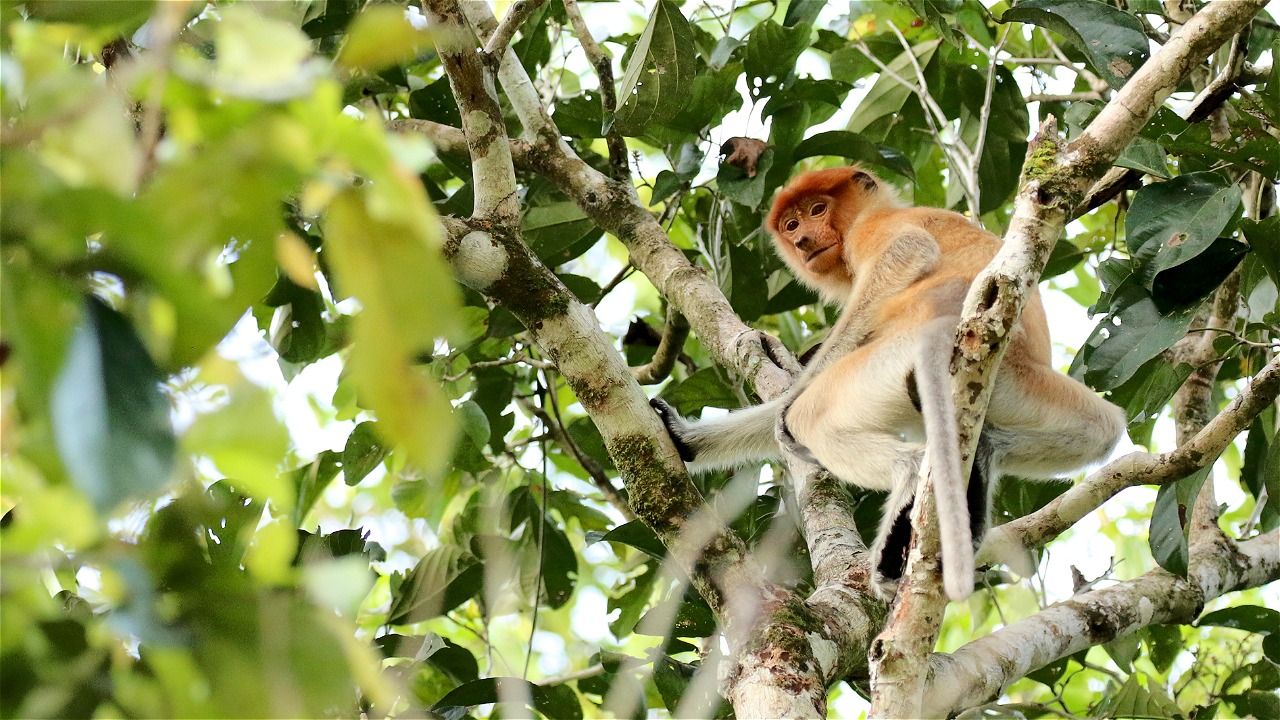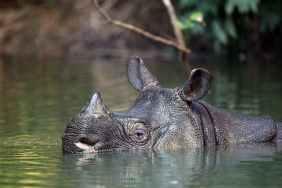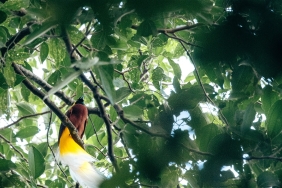COMMITMENT OF THE PARTIES TO REALIZE THE PROTECTION OF ORANGUTAN AND PROBOSCIS MONKEY CORRIDORS IN KUBU RAYA
Pontianak - WWF-Indonesia is working together with the Forest Management Unit (KPH) of Kubu Raya region to build a commitment to protect orangutan and proboscis monkey habitat in Kubu Raya Regency. This was done through a discussion between the parties in Pontianak, Thursday (27/9/2018). The event also involved companies that actively manage natural resources in Kubu Raya, Sanggau and Ketapang.
This refers to the results of the 2012 documentation that detected the existence of a species of pesut (Irrawaddy Dolphin) for the first time in the waters of Kubu Raya. The presence of protected animals is an indicator that natural conditions are still quite good in the area. Since then, WWF began conducting a series of studies and surveys of the biodiversity of mangrove ecosystems in Kubu Raya.
Until 2017, at least 40 types of mangrove vegetation have been identified, proboscis monkeys (Nasalis larvatus) with 54 encounter points spread across the concession area, 8 types of crustaceae groups, 110 species of birds, and 4 types of marine mammals (humpback dolphins, finless dolphins/porpoises, whales, and porpoises).
Acting Muller Schwaner Arabela Landscape Leader WWF-Indonesia Ian M. Hilman said that to preserve biodiversity in Kubu Raya, more integrated conservation efforts are needed by involving the parties.
"This meeting and discussion process is the first step to build as well as capture the commitment of the parties to jointly engage or contribute to the protection of areas that are the habitat of wildlife, especially proboscis monkeys and orangutans, including stakeholders from the government and the private sector," he said.
Orangutans (Pongo pygmaeus) and proboscis monkeys (Nasalis larvatus) are typical animals of Borneo Island, which currently exist in pockets of habitat with varying population sizes. Orangutan and proboscis monkey populations are currently declining and their habitats are increasingly threatened. Conservation or protection of orangutans and proboscis monkeys is one of the efforts to reduce the rate of population reduction in nature and the rate of reduction in the area of forest that is their habitat.
"We need to support the initiative to build a landscape-scale animal corridor, considering that proboscis monkeys are endemic to Kalimantan, especially in the Kubu Raya area, whose habitat conditions are currently increasingly depressed," said the Head of UPT KPH Kubu Raya region, Ponty Wijaya.
Ponty appreciated the idea of a meeting initiated by WWF and also the private sector that would ensure the sustainability of proboscis monkeys and orangutans through a landscape system animal corridor. It is hoped that the system can be upgraded to an Essential Ecosystem Area (KEE).
"In the future, the community will not only be involved in preserving the habitat of orangutans and proboscis monkeys, but can also benefit from a sustainable habitat for their economy, so that there is a mutually beneficial relationship," he added.
Acting Manager Protected and Conserved Areas - as well as the focal point for WWF-Indonesia's orangutan species - Albertus Tjiu said that the efforts to establish wildlife KEEs that are currently being discussed will directly contribute to supporting the national achievement targets contained in the orangutan and proboscis monkey Conservation Strategy and Action Plan (SRAK) document, including responding to recommendations from the 2016 Population and Habitat Viability Assessment (PHVA) report which mentions one of the orangutan meta-populations, namely Pygmaeus Fragmented South, for which data is still not available.
"The orangutan corridor in question is part of the meta-population for the pygmaeus species. Thus, West Kalimantan has tried to reduce the action plan at the national level to the sub-national level, as well as answering the 2016 PHVA recommendations," said Albert.
Also present in the discussion were companies such as PT Wana Subur Lestari (WSL), PT Kandelia Alam, PT Ekosistem Khatulistiwa Lestari (EKL), PT Bina Silva Nusa (BSN), and PT Mayangkara Tanaman Industri (MTI), which manage areas in Kubu Raya, Sanggau, and Ketapang districts.
The private sector, in this case companies that hold area management licenses in Kubu Raya, need to pay attention to the sustainability between area and species conservation efforts. Both from ecological, social, and economic aspects. These aspects can be the main milestone for the sustainability of an area's ecosystem.
"We support and welcome the collaborative management of the parties, in this case the establishment of a corridor as an effort to protect the species and habitat of proboscis monkeys and orangutans, especially those included in the company's management area," responded Tsuyoshi Kato, Deputy President Director of PT WSL and PT MTI.
The existence of a company functions as a driver of economic development in a region. On the other hand, there are efforts that must also be built by companies for the preservation of animal habitats, including efforts to improve community welfare. How this can be carried out in a balanced manner is a mandate for all parties related to conservation activities in particular.





